As the season draws to a close, my enthusiasm for hunting gradually wanes. Despite feeling less motivated, I decided to head out one last evening to try and bag another doe before the season ended. What I figured would be an easy task of harvesting a doe due to the high population did not go as planned. The first two hours of the afternoon sit resulted in zero sightings of anything resembling a deer. After patiently waiting—well, let’s say waiting anyway—I finally caught the movement of a deer walking towards my stand. Because I was hunting with a shorter, in-design crossbow, I remained seated and waited for the doe to come into closer shooting range. To keep my string of bad luck of deer sightings going, she turned slightly out of range and went in a different direction. Fortunately, my luck soon changed as another mature doe came within twelve steps of the base of my tree, giving me the perfect broadside shot. The doe kicked and ran toward the steep ravine, which I had hoped a shot deer would never do.
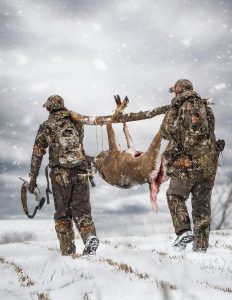
After sitting still for twenty minutes to let the doe expire, I climbed down my stand, gathered my bloody arrow, and began following the blood trail. Darkness was closing in fast, and I knew I needed to hurry to get her out of the thick timber before I lost light. The trail led down the steep hill into thick brushy cover, where I eventually found my deer lying in a dry creek bed.
Before this night, I had been on a significant health kick for the past eleven months. I was ¾ of the way to losing ninety-four pounds and pushing myself through several workouts and many runs. Though this was the moment I had been training for, I chose to climb to the top of the hill to call my good friend to get help dragging my deer to the top so I could get my vehicle close enough to transport her back home.
Here was the test I had been waiting, training, and preparing for. After my buddy and I made our way down to the deer, we strapped a dragging harness around the deer and took off up the hill, like two mules carrying logs, back in the old days of logging. We were winded when we finished, and we did have to stop once to catch our breath. Yet, I was amazed at the difference in how my body performed and how I felt compared to years prior. Instead of dreading the drag out, I high-fived my friend and said, “That was awesome.”
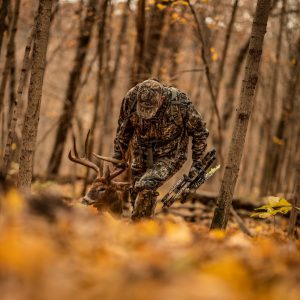
Whitetail deer hunting is an exhilarating and popular activity in the United States. The hunt typically involves using a treestand, saddle, blind, or a still hunting technique when making the harvest. Yet, a lot of walking and the physical challenge of dragging up to a 300-pound deer back to your vehicle will likely be a hunter’s most considerable challenge. A dedicated and influential hunting fitness regime is crucial to meet these physical demands. For eleven months before my hunt, and continuing into the present, I have consciously been exercising and strength training to improve my everyday health, yet also making the struggles of the hunt as enjoyable as the harvest. Although being in shape is not necessary to be a good hunter, it does give the hunter a massive advantage of completing each desired task with ease and enjoyment if they set their mind to it and work hard throughout the year.
Make a Plan and Stick to It: Set a Goal
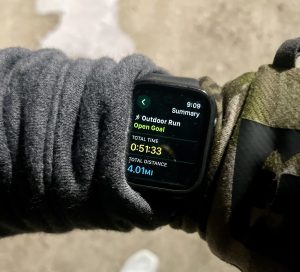
Starting a fitness regime for hunting is easy; sticking to it is where many falter. Setting clear goals and outlining a concrete plan is essential to maintain motivation and consistency. Throughout my weight loss journey, I would set short-term and long-term goals to track my achievement and give myself something to work hard to achieve. Write down your fitness objectives and the specific workouts you’ll incorporate to achieve them. Whether your goal is to improve your endurance, build strength, or increase your agility, having a written plan will help you stay on track and measure your progress. Plus, after you achieve them, it provides personal satisfaction when reflecting on your journal or achievements. To stay motivated and ensure you are held accountable to your set goals, work out or exercise with a friend or partner.
Eat Clean
Nutrition plays a critical role in your fitness journey. Eating clean means consuming whole, unprocessed foods that provide essential nutrients without the added sugars and unhealthy fats. This has been a significant change for my family and me. Not everyone is trying to lose weight, and eating clean isn’t for weight loss only; it affects how you feel and perform daily.
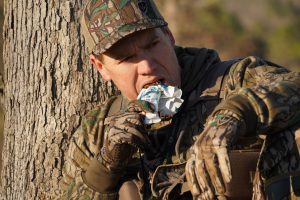
Building muscle is vital for hunters, meaning a higher protein intake is required. Incorporating a protein supplement like 1st Phorm’s Level-1 protein powder, especially in a delicious flavor like Chocolate Banana, can be beneficial. But why is protein so important? Protein is the building block of muscle. It helps repair tissues after workouts and supports muscle growth. By ensuring you get enough protein, you can maximize your strength gains and recovery, making you more prepared for the physical demands of hunting. Throughout the past turkey season, I would have a 1st Phorm protein shake for my breakfast before or after hunting in the mornings. Consuming a protein shake after a morning of walking up and down hills and working all your body muscles helps replenish what you have worked off and build more muscle along the way. Other foods I have consumed are high-protein foods such as poultry and beef and many different snacks with peanut butter, including my favorite 1st Phorm Protein Bars, which are a great snack during or after the hunt.
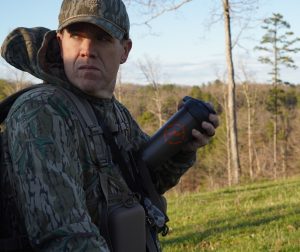
Exercise
Cardio exercises for hunters such as running, hiking, and walking are excellent for getting in shape. But why is cardio so beneficial for your body?
Cardio improves cardiovascular health, increasing heart and lung capacity. This is crucial for hunters who must cover large distances or traverse rugged terrain. Better cardiovascular fitness means you can hunt longer without fatigue and have better stamina when you drag your trophy back to your vehicle. As mentioned, I tested my endurance later in the year after harvesting a mature doe with a crossbow. A couple of years prior, at the same farm, I had shot a mature buck that required dragging it up a steep hill to recover the animal fully. From a young teenager, I have battled being overweight and having asthma, which has affected my breathing for several years. When recovering my buck, I had to take my rescue inhaler multiple times and make many stops to catch my breath. However, after working out and paying attention to my health for a year, the late season was a breeze, including never using my inhaler.
Strength Training for Hunting
Incorporating strength training for hunting into your fitness regime is also essential. Dumbbells, weight bars, and resistance bands can significantly enhance strength. But why is building strength and muscle so crucial for hunters?
Strength training increases muscle mass and improves bone density, joint flexibility, and overall body mechanics. For hunters, this translates to better control and precision when handling weapons, climbing tree stands, more power and stability when moving through uneven terrain, and the physical capability to drag a heavy deer back to your vehicle.
Make It Fun
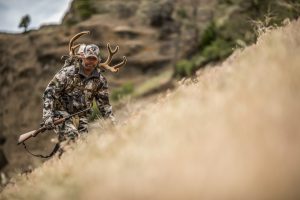
Maintaining your fitness regime can be more enjoyable if you incorporate activities you love. Scenic hikes and trails offer a beautiful backdrop for your workouts. Simulating real hunting situations by packing your bow and backpack while hiking or running can add an exciting challenge. Listening to your favorite podcast or music playlist can make the time fly by. Regularly challenging yourself with new activities keeps your workouts interesting, engaging, and rewarding.
Being in peak physical condition provides hunters with a significant advantage. Enhanced endurance, strength, and agility make the physical aspects of hunting less taxing and more enjoyable. Good fitness improves hunting performance, reduces the risk of injuries, and enhances overall health. By following a structured fitness regime, eating clean, and making your workouts fun, you’ll be better prepared for the hunting season, giving you the edge needed for a successful and enjoyable hunt.
Per our affiliate disclosure, we may earn revenue from the products available on this page. To learn more about how we test gear, click here.





